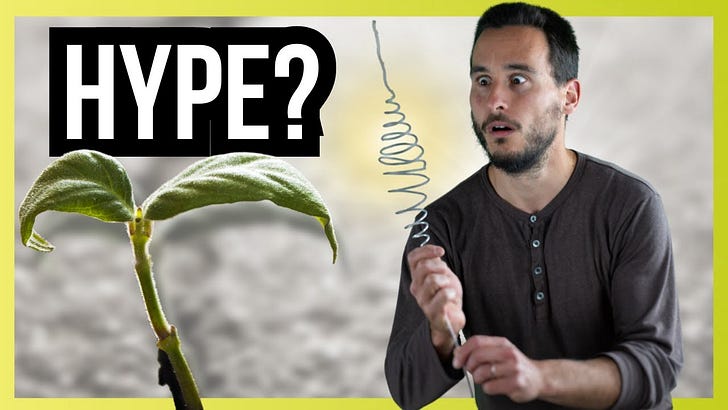Electroculture has been making waves in regenerative agriculture circles, with claims that simple antenna-based devices can enhance plant growth, reduce pests, and improve soil health. But for those already familiar with the concept—especially members of the Electroculture Beginners to Advanced Facebook community—we want to take the conversation deeper.
Rather than rehashing the basics, this discussion focuses on the practical applications, successes, and challenges of implementing electroculture in real-world settings. We’ve seen the enthusiasm and curiosity growing within our community, and now it's time to explore what truly works.
Join us as we dive into the nuances of electroculture with Ray and David. In our latest conversation, we break down real-world experiences, scientific perspectives, and the future potential of these devices.
Key Takeaways from Our Discussion:
Beyond Spiral Antennas: While the popular Iguina-style spiral antennas are widely used, electroculture extends far beyond this, incorporating devices like earth batteries, pulsed electricity systems, and atmospheric charge collectors.
Electroculture as a Biostimulant: The application of electric and magnetic fields has been shown to enhance plant metabolism, increase nutrient density, and improve plant resistance to disease beyond just boosting yields.
Scientific and Experimental Foundations: David, an electrical engineer, has spent over 20 years developing and refining electroculture devices, conducting research that reveals significant plant growth benefits, sometimes doubling or tripling yields in crops like hemp, peas, and cannabis.
Practical Implementations: From using simple 12V power supplies to integrating solar-powered pulse generators, the conversation delves into the best methods for applying electroculture effectively in different environments.
Paramagnetic and High-Voltage Approaches: The role of materials like paramagnetic stone and structured energy fields—including pyramidal structures and atmospheric charge collectors—are discussed as ways to enhance plant vitality naturally.
Caution and Experimentation: Not all electroculture techniques are risk-free. Misuse can harm plant growth, making careful experimentation and a scientific approach essential.
Watch the full discussion to gain new insights and see how electroculture is evolving beyond the hype. Whether you’re just getting started or looking to refine your techniques, this deep dive will provide valuable perspectives.
[Watch the Conversation Below]
It’s a 30 minute breakdown of a lot of Electroculture Devices in 2025 - You can always add the video to your Youtube Watch List or Subscribe to Watch Later.
Thanks for your continued interest and support.
Ray Lee "Get’s Excited About Nuanced Things" Bacon
PS. This is our first of many long-form videos in a series called Electroculture 101 - hope you enjoy






